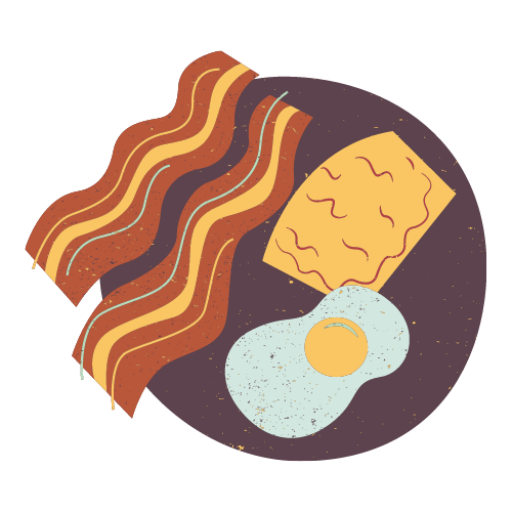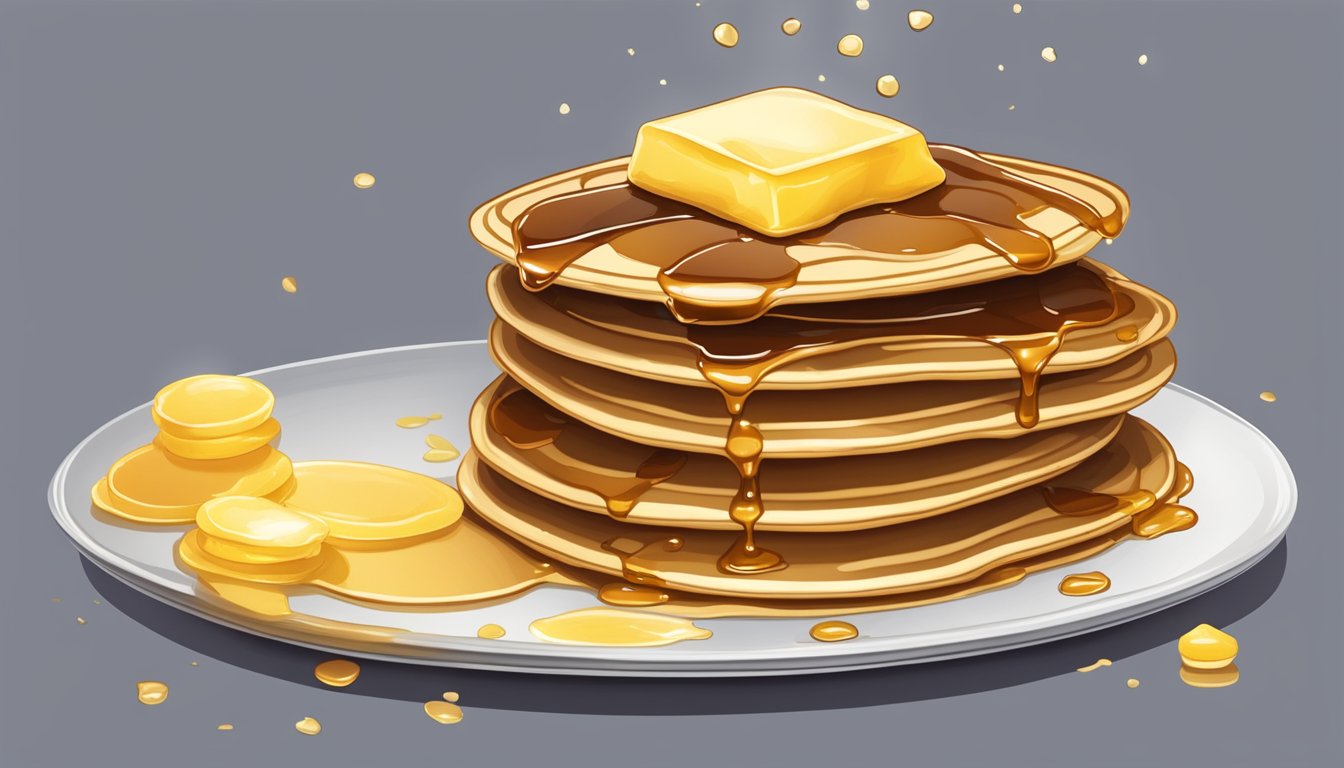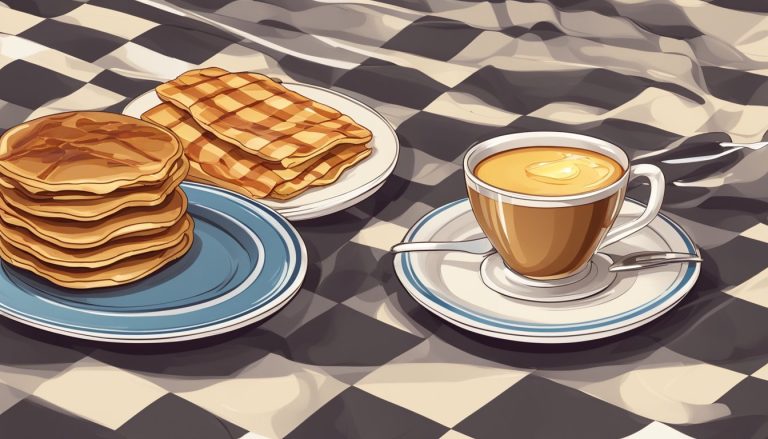The great pancake debate has long divided breakfast enthusiasts: should butter or syrup be applied first? This seemingly simple question sparks passionate discussions among pancake lovers worldwide, with each side defending their preferred method.
The order of butter and syrup application can significantly impact the pancake experience. Butter-first advocates argue that it melts evenly into the warm pancake, creating a rich base for the syrup. Syrup-first supporters claim their method allows for better absorption and distribution of sweetness throughout the stack.
Ultimately, personal preference plays a key role in this breakfast dilemma. Some pancake aficionados even experiment with layering techniques, alternating butter and syrup between each pancake for a unique flavor profile. Regardless of the chosen approach, the great pancake debate continues to fuel lively conversations at breakfast tables everywhere.
Historical Context of the Great Pancake Debate

Pancakes have been a beloved breakfast staple for centuries, with the debate over toppings evolving alongside cultural shifts and culinary innovations. The question of whether to add butter or syrup first has roots in both tradition and personal preference.
Evolution of Pancakes and Toppings
Ancient civilizations enjoyed early versions of pancakes, often as simple flatbreads. The Greeks and Romans made pancakes from wheat flour, olive oil, honey, and curdled milk. Medieval Europeans added eggs, butter, and spices to their pancake recipes.
In North America, Native Americans used cornmeal to create johnnycakes. European settlers later introduced wheat flour pancakes. Maple syrup became a popular topping in the 18th century as maple tree tapping techniques improved.
The 19th century saw the rise of chemical leavening agents, leading to fluffier pancakes. This era also marked the introduction of packaged pancake mixes, making preparation easier for home cooks.
Cultural Significance of Pancakes
Pancakes hold special meaning in various cultures. In Christian traditions, they’re associated with Shrove Tuesday, when rich ingredients are used before Lent. Many countries have unique pancake varieties:
- France: Thin crêpes
- Russia: Blini served with caviar
- Japan: Savory okonomiyaki
Pancakes often feature in folklore and literature. The Brothers Grimm included a tale about a pancake in their collection of fairy tales.
In the United States, pancakes became synonymous with comfort food and family breakfasts. Diners and pancake houses gained popularity in the mid-20th century, cementing pancakes’ place in American culture.
The Role of Ingredients in Flavor and Consistency

The ingredients used in pancakes and their toppings play a crucial role in determining the final flavor profile and texture. Both the pancake batter composition and the choice of toppings significantly impact the overall eating experience.
Understanding Butter and Syrup Varieties
Butter comes in salted and unsalted varieties, each offering a distinct taste. Salted butter adds a savory note, while unsalted allows more control over the pancake’s flavor profile.
Maple syrup ranges from light to dark grades. Light syrup has a delicate flavor, while darker varieties offer a more robust taste. Some people prefer artificially flavored syrups for their sweeter profile.
The temperature of butter and syrup affects their interaction with pancakes. Warm butter melts easily, while room temperature syrup preserves the pancake’s texture better than cold syrup.
Importance of Batter Composition
Pancake batter ingredients greatly influence the final product’s taste and consistency. Flour provides structure, while eggs contribute to binding and richness.
Milk or buttermilk affects the pancake’s tenderness. Buttermilk creates a tangier flavor and lighter texture due to its acidity.
The fat content in the batter, often from melted butter or oil, impacts the pancake’s moisture and flavor. More fat typically results in a richer taste and softer texture.
Leavening agents like baking powder or baking soda determine the pancake’s fluffiness. The right balance ensures a light, airy texture without an overpowering taste.
Cooking Techniques and Their Impact

Cooking techniques play a crucial role in determining the texture, flavor, and overall quality of pancakes. The choice of cooking surface and leavening agents can significantly influence the final product.
Griddle vs. Waffle Iron
Griddles produce classic flat pancakes with a golden-brown exterior. They allow for easy flipping and monitoring of doneness. Pancakes cooked on a griddle tend to have a uniform thickness and texture.
Waffle irons create a distinct pattern and texture. The deep pockets capture syrup and toppings effectively. Waffle iron pancakes often have a crispier exterior due to direct contact with the heated plates.
Each method has its merits. Griddles offer versatility and control over cooking. Waffle irons provide unique presentation and texture. The choice depends on personal preference and desired outcome.
Leavening Agents and Fluffiness
Leavening agents are key to achieving fluffy pancakes. Baking powder is the most common choice. It reacts with liquid ingredients to produce carbon dioxide bubbles, causing the batter to rise.
Some recipes use a combination of baking powder and baking soda for extra lift. Buttermilk or yogurt can enhance the reaction, resulting in taller, fluffier pancakes.
Whipped egg whites folded into the batter can create an even lighter texture. This technique introduces air pockets that expand during cooking.
Proper mixing is crucial. Overmixing can lead to tough, flat pancakes by deflating air bubbles and developing gluten. Gentle folding preserves the leavening agents’ effectiveness.
Comparative Analysis: Pancakes Versus Similar Breakfast Foods
Pancakes are a beloved breakfast staple, but they’re not the only option for those craving a comforting morning meal. Various alternatives offer unique textures, flavors, and culinary traditions.
Pancakes and Waffles: A Side-by-Side
Pancakes and waffles share many similarities in ingredients but differ significantly in texture and preparation. Pancakes are typically flat, soft, and cooked on a griddle. Waffles, on the other hand, are crispy on the outside and fluffy on the inside, thanks to their cooking method in a waffle iron.
Waffle batter tends to be thicker than pancake batter, often containing more fat. This contributes to waffles’ crispy exterior. Pancakes absorb toppings more readily, while waffles have pockets that hold syrup and other toppings.
Both can be served with similar accompaniments, such as butter, syrup, fruits, or whipped cream. Waffles are often considered more indulgent due to their texture and ability to hold toppings.
Crepes and Thin Pancakes
Crepes are a French variation of pancakes, characterized by their extremely thin and delicate nature. Unlike American pancakes, crepes are made with a very runny batter and cooked quickly on a flat surface.
Crepes can be served with sweet or savory fillings. Sweet crepes often feature fruits, chocolate, or cream. Savory crepes may contain cheese, ham, or vegetables.
Thin pancakes, found in various cuisines worldwide, fall between American pancakes and crepes in thickness. They offer a balance of substance and delicacy, allowing for versatile serving options.
Sweet Potato Pancakes and Savory Options
Sweet potato pancakes offer a unique twist on traditional pancakes. They incorporate mashed sweet potatoes into the batter, resulting in a denser, more flavorful pancake with a slightly orange hue.
These pancakes are naturally sweeter and more nutritious than regular pancakes. They pair well with both sweet and savory toppings, such as maple syrup or sour cream.
Other savory pancake options include potato pancakes (latkes) and corn pancakes. These variations often serve as side dishes or main courses rather than breakfast items. They showcase the versatility of the pancake concept across different cultures and meal times.
The Sweet Versus Savory Debate

Pancakes offer a versatile canvas for both sweet and savory flavor profiles. This culinary flexibility allows for a wide range of toppings and accompaniments to suit different tastes and preferences.
Role of Maple Syrup and Sweet Toppings
Maple syrup reigns supreme as the classic sweet topping for pancakes. Its rich, amber color and distinct flavor complement the soft texture of pancakes perfectly. Many pancake enthusiasts drizzle warm maple syrup generously over their stack, allowing it to seep into each layer.
Chocolate chips are another popular sweet addition. They can be mixed into the batter or sprinkled on top, melting slightly from the warmth of freshly cooked pancakes. Fruits like strawberries, blueberries, and bananas also feature prominently in sweet pancake combinations.
Whipped cream, powdered sugar, and flavored syrups offer additional options for those with a sweet tooth. These toppings can be mixed and matched to create unique flavor profiles.
Savory Complements to Pancakes
Savory pancakes present an entirely different taste experience. Cheese, herbs, and spices can be incorporated directly into the batter to create flavorful variations. Cheddar and chives make a popular combination, adding depth to the pancake’s flavor.
Bacon is a common savory topping, providing a salty crunch that contrasts with the soft pancake texture. Eggs, whether fried or poached, pair well with savory pancakes, creating a hearty breakfast option.
Smoked salmon, cream cheese, and dill offer a sophisticated savory twist. This combination draws inspiration from bagel toppings, adapting them to the pancake format.
Vegetables like spinach, mushrooms, and bell peppers can be added to pancake batter or used as toppings, increasing the nutritional value and adding interesting textures.
Health and Nutrition Factors

Pancakes’ nutritional profile varies widely based on ingredients and toppings. Key factors include calorie content, macronutrient balance, and potential health benefits or drawbacks of different pancake variations.
Caloric Considerations and Healthier Variations
A typical stack of pancakes with butter and syrup can pack a significant caloric punch. Three medium pancakes with toppings may contain 500-800 calories. This high calorie count stems primarily from refined flour, added sugars, and fats.
Healthier pancake variations can reduce calories while boosting nutrition. Whole wheat flour adds fiber and nutrients. Almond or coconut flour increases protein and healthy fats. Using mashed banana or applesauce as a binder cuts down on eggs and oil.
Toppings greatly impact overall nutrition. Fresh berries add antioxidants and natural sweetness with minimal calories. Greek yogurt provides protein and calcium. Limiting syrup to 1-2 tablespoons helps control sugar intake.
Analyzing the Nutritional Components
Pancakes’ main ingredients contribute varying nutritional elements. Flour provides carbohydrates and some protein. Eggs add protein and vitamins. Milk supplies calcium and vitamin D.
A basic pancake’s macronutrient breakdown is approximately:
- 75% carbohydrates
- 15% fat
- 10% protein
This balance shifts with ingredient modifications. Protein pancakes may have a 40/30/30 ratio of carbs/protein/fat. Keto pancakes emphasize fats while minimizing carbs.
Micronutrients depend on specific ingredients. Whole grain pancakes offer more B vitamins and minerals. Adding nuts or seeds boosts vitamin E and omega-3 fatty acids. Fruit toppings increase vitamin C and other antioxidants.
Common Practices in Popular Pancake Houses

Pancake houses across America have developed unique traditions and methods for serving their fluffy creations. These establishments often reflect local tastes while maintaining certain universal practices that define the quintessential pancake experience.
The IHOP Influence
IHOP, or the International House of Pancakes, has significantly shaped pancake-serving customs in the United States. Their signature buttermilk pancakes set a standard for many diners and restaurants. IHOP offers a diverse menu with pancake flavors ranging from classic buttermilk to more adventurous options like New York Cheesecake.
The chain popularized the practice of serving pancakes in stacks of three or four, often accompanied by a small pitcher of warm syrup. This presentation style has become a hallmark of many pancake houses. IHOP also introduced the concept of pancake combos, pairing flapjacks with eggs, bacon, and other breakfast staples.
Local Delicacies and Regional Preferences
While IHOP’s influence is widespread, many local pancake houses pride themselves on unique recipes and regional specialties. In New England, thin and crispy pancakes are popular, often served with pure maple syrup. Southern states frequently offer buttermilk pancakes with a side of country ham or grits.
Some regions have developed distinctive pancake traditions:
- Dutch Baby pancakes in Pennsylvania Dutch country
- Sourdough pancakes in Alaska
- Cornmeal johnnycakes in Rhode Island
- Blueberry pancakes in Maine
Local pancake houses often incorporate regional ingredients into their batters and toppings, such as pecans in the South or huckleberries in the Pacific Northwest. These establishments frequently display a commitment to using locally sourced ingredients, appealing to customers who value farm-to-table dining experiences.
The Psychological Aspect of Breakfast Choices
Breakfast choices reflect deeply ingrained psychological patterns and emotional connections. These decisions tap into our comfort zones, routines, and decision-making processes.
Comfort Food and Morning Rituals
Pancakes often serve as comfort food, evoking childhood memories and feelings of warmth. This emotional connection influences breakfast preferences. Many people associate pancakes with weekend family traditions or special occasions.
For some, the ritual of making pancakes provides a sense of control and stability to start the day. The familiar process can be soothing and help ease morning stress.
Cultural backgrounds also play a role in breakfast comfort foods. In some regions, pancakes are a staple, while others may turn to different dishes for their morning comfort.
Decision Making in Toppings and Add-ons
Choosing toppings for pancakes involves complex decision-making processes. Some opt for traditional butter and syrup, while others explore creative combinations.
Nutritional considerations often compete with taste preferences. Health-conscious individuals might choose fresh fruit toppings, while others prioritize indulgence with chocolate chips or whipped cream.
The abundance of options can lead to decision fatigue. To simplify, many stick to their tried-and-true favorites.
Personal values also influence topping choices. Those focused on sustainability might opt for locally sourced maple syrup or organic butter.
Mood plays a significant role in these decisions. A person might choose comforting, sweet toppings on a stressful day or opt for a protein-rich nut butter when needing an energy boost.
The Future of Breakfast: Innovations and Trends

Breakfast is evolving rapidly, with new trends reshaping how we start our days. Creative culinary approaches and shifting consumer priorities are driving exciting changes in the morning meal landscape.
Brunch Culture and Artisanal Experiences
Brunch has transformed from a casual weekend affair to a cultural phenomenon. Restaurants now offer elaborate brunch menus featuring gourmet pancake stacks and innovative egg dishes.
Artisanal ingredients take center stage, with locally-sourced produce and house-made condiments elevating classic breakfast fare. Chefs experiment with unique flavor combinations, introducing savory pancakes topped with bacon jam or sweet potato pancakes drizzled with bourbon maple syrup.
Instagram-worthy presentations have become a priority, driving the creation of visually stunning dishes. Colorful smoothie bowls and avocado toasts adorned with edible flowers are now staples of trendy brunch spots.
Sustainability and Low-Waste Cooking
Environmental consciousness is shaping breakfast trends. Restaurants and home cooks alike are adopting sustainable practices to reduce food waste and minimize environmental impact.
Plant-based options are gaining popularity, with innovative egg substitutes and dairy-free alternatives becoming mainstream. Chefs create versatile dishes that appeal to both vegans and omnivores, like banana-oat pancakes or chickpea scrambles.
Zero-waste cooking techniques are on the rise. Breakfast spots use vegetable scraps to make flavorful stocks or turn stale bread into French toast. Some cafes offer discounts to customers who bring reusable containers for takeout orders.
Seasonal and locally-sourced ingredients feature prominently on menus, reducing transportation emissions and supporting local farmers. This approach also ensures fresher, more flavorful breakfast options year-round.




